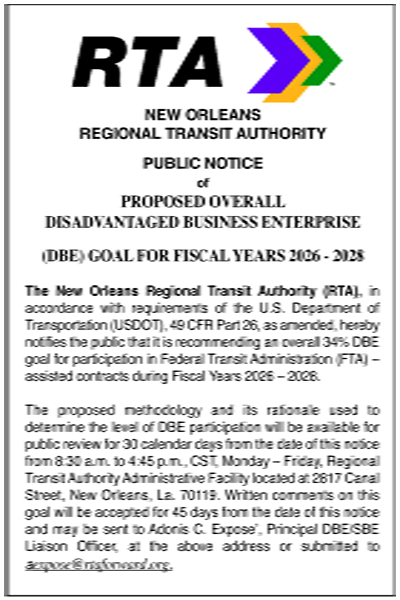Media depictions of Asian Americans lack important depth
25th June 2012 · 0 Comments
By Joshunda Sanders
Contributing Writer
(Special from Maynard Institute and New America Media) – From New York Knicks basketball star Jeremy Lin to Priscilla Chan, wife of Facebook founder Mark Zuckerberg, the mainstream media usually portray Asian-Americans as wealthy, well-educated and foreign. The dominant cultural narrative routinely ignores working and middle-class Asian Americans, people of various nationalities who struggle with the same socioeconomic conditions as do other Americans.
Despite shortcomings, mainstream media are rarely criticized for the way they depict Asian Americans, even though the lack of depth in the coverage is stunning. In fact, Mee Moua, president and executive director of the Asian American Justice Center (AAJC) in Washington, says simplistic media coverage pictures Asian-Americans as either the model minority or the perpetual foreigner.
Because of this, she says, “the true needs and complexity of Asian Americans are totally missed by mainstream reporters. ‘American Beats Michelle Kwan’ or ‘The Ultimate Assimilation’ are mainstream headlines that underscore my point — the media need to do better.
“What about the struggles that certain Asian-American groups have [such as] the lowest rates per capital income of any racial group or that more than half of all Asian-Americans attend community colleges? Where are those stories exploring the needs of the community?”
That has been true, even as Asian Pacific Americans have found themselves confronted with the same racial and economic problems that plague other people of color in the United States.
The death last October of Army Pvt. Danny Chen, 19, who apparently killed himself in Afghanistan last fall, and the 1982 beating death of Vincent Chin in Detroit are examples of alternative narratives of Asian-American men that display a more nuanced portrait of the Asian community in America.
Chin, 27, a draftsman, was attending his bachelor party at a suburban Detroit strip club when he got into an argument with Ronald Ebens, a white Chrysler plant superintendent. Witnesses recalled Ebens saying to Chin: “It’s because of you little [plural expletive] that we’re out of work.”
The two fought, and Ebens’ stepson, Michael Nitz, also laid off from his job at an auto plant, jumped in. A parking attendant broke up the struggle, but Ebens and Nitz later followed Chin to a fast-food restaurant. Nitz held Chin while Ebens struck Chin in the head with a baseball bat, authorities said.
Chin lay in a coma and died four days after the beating. His death was a turning point for the Asian Pacific civil rights movement in America. Fifteen years later, Alethea Yip wrote in an Asian Week article that the incident was emblematic of anti-Asian sentiment in the United States.
“It was ignorant; Ebens and Nitz presumed Chin, a…Chinese-American, was Japanese. It was economically motivated; the two autoworkers blamed the Japanese — and, mistakenly, Chin — for the ailing U.S. auto industry and the consequential loss of jobs. And it was horribly violent; the use of a baseball bat as a murder weapon was a brutal act and an equally brutal reminder of Americana.”
Ebens and Nitz pleaded guilty to manslaughter. Each received three years probation and a $3,000 fine. They were acquitted in a subsequent federal case.
The unsettling outcome led to creation of organizations like the AAJC but has not resulted in more visibility for Asian Americans, Moua says. She cites, for example, the case of Chen, who died from a gunshot wound in 2011 after being heckled by fellow soldiers.
For about six weeks, Chen was allegedly tormented daily by white superiors, reporter Jennifer Gonnerman wrote last January in New York magazine. “They singled him out, their only Chinese-American soldier, and spit racial slurs at him: “gook,” “chink,” “dragon lady.” They forced him to do sprints while carrying a sandbag. They ordered him to crawl along gravel-covered ground while they flung rocks at him. And one day, when his unit was assembling a tent, he was forced to wear a green hard-hat and shout out instructions to his fellow soldiers in Chinese.”
Stories like Gonnerman’s are rare in mainstream news coverage, Oliver Wang, an assistant professor of sociology at California State University Long Beach, wrote in an email. “It’s hard to describe anything as usual, since stories about Asian Americans in the mainstream tend to be unusual by their very presence.”
Wang noted, however, that the model minority stereotype, which supports the idea that Asian Americans exemplify the best way to be a person of color in society based on stellar academic performance, modesty and hard work, is pervasive across a range of media stories. Jen Wang, co-creator of and a popular blogger at DISGRASIAN.com, agreed.
Jen Wang cites the story of Diane Tran, 17, a Houston-area honor student jailed for a day for excessive unexcused absences. Lanny Moriarty, justice of the peace (Precinct 1), told KHOU-TV in Houston that Tran was in his court in April on truancy charges after missing too much school. When she came before him again in May, she was jailed for missing more classes.
The story went viral and prompted creation of helpdianetran.com, which by early June had raised more than $100,000 to help support her. The site, which has ended the fundraising campaign, describes Tran as “an 11th grade honor student” and says she “works a full time job plus a part-time job while taking advancement and dual-credit college level courses in high school.”
Friends, co-workers and classmates describe her as a diligent, hard-working student. “She goes from job to job from school,” classmate Devin Hill told KHOU. “She stays up until 7 in the morning doing her homework.”
In an email, Jen Wang wrote, “I personally think her story is extraordinary, and she deserves all the help she can get. But I do think a factor in her story reaching a larger audience has to do with the fact that it’s a narrative the public is familiar with vis-a-vis Asian-Americans—i.e. we’re hardworking, industrious, overachieving—and, moreover, it’s a narrative that the public likes.”
Beyond the stereotype that all Asian Americans are doctors or lawyers who attend good schools are startling statistics about the rest of the Asian-American community. A recent Economic Policy Institute report showed that despite higher levels of education overall, the Asian-American unemployment rate is higher than that of whites.
About 12 percent of America’s Asian community lives below the poverty level, compared with 9.9 percent of non-Hispanic whites, according to the Leadership Conference on Civil and Human Rights in Washington.
In a blog last October for New America Media, where he is an editor, Andrew Lam cited a news release from the conference reporting that “Asian Americans as a group have lower-than-average poverty rates, but several Asian nationalities have higher-than-average rates of poverty. The poverty rate among Hmongs is 37.8 percent, among Cambodians 29.3 percent, among Laotians 18.5 percent, and among Vietnamese 16.6 percent.”
Thus, Moua says, the most troubling ramification of the model minority narrative is that it “blinds policymakers and decision-makers to the needs of the community. We all know that the extraordinary achievements of some individuals doesn’t mirror all Asian Americans and should not hide the real needs and challenges facing our community.”
This article was originally published in the June 25, 2012 print edition of The Louisiana Weekly newspaper



